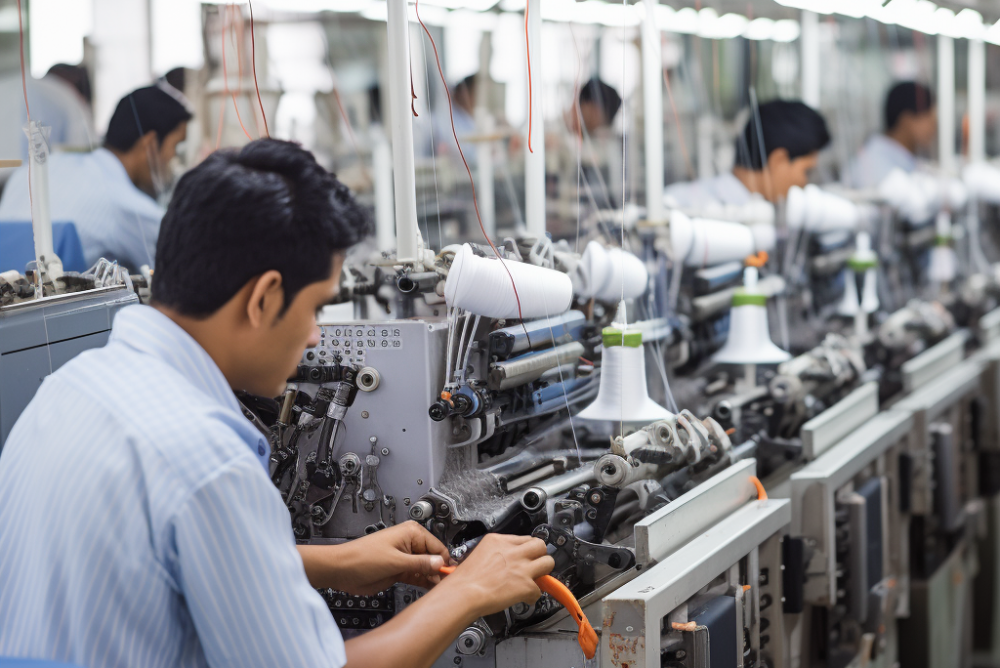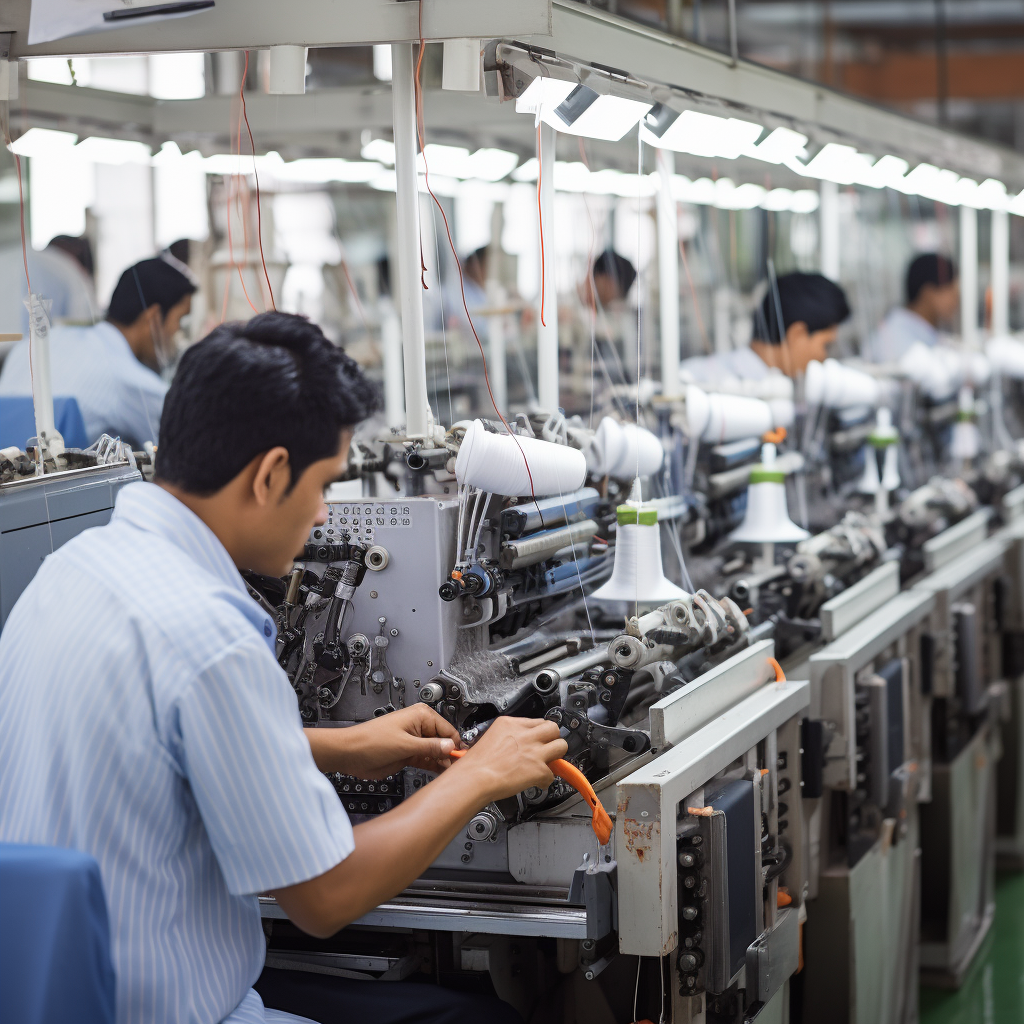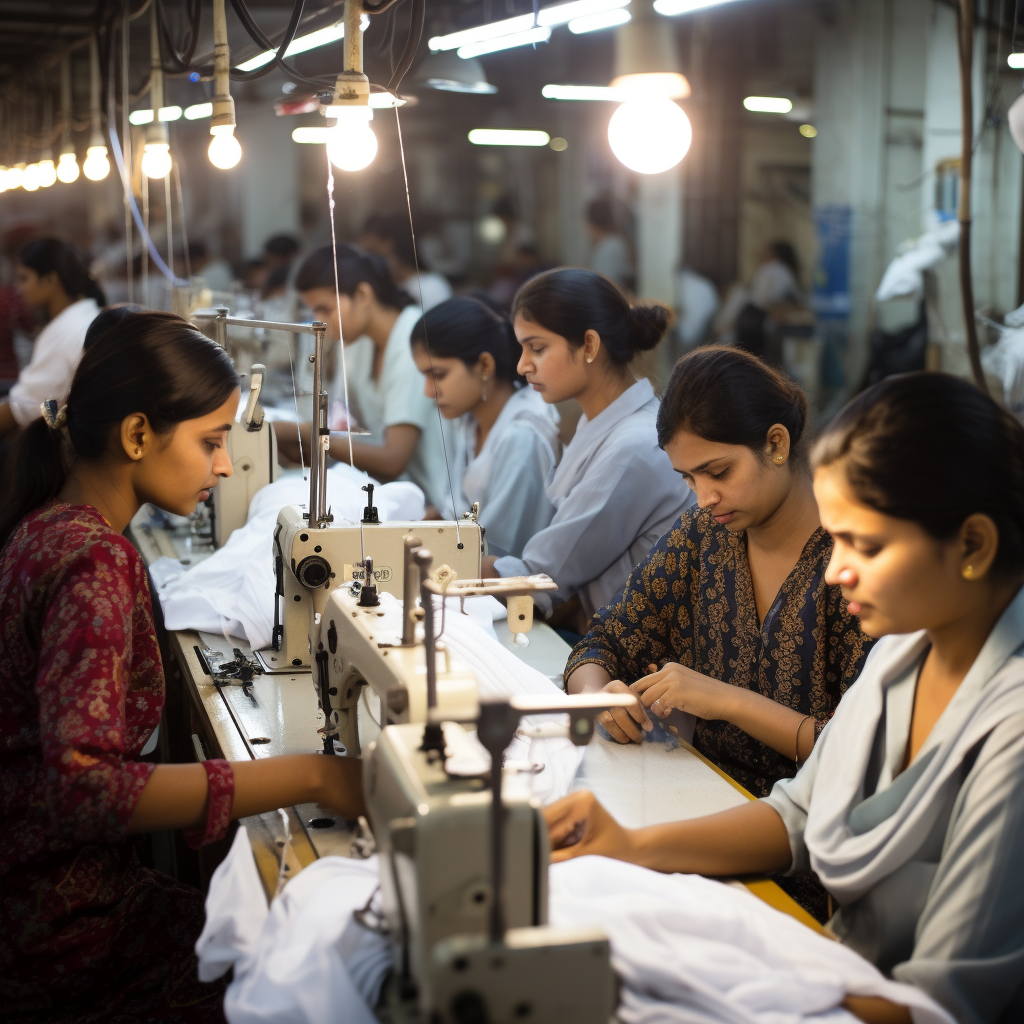HR's Vital Role in the Textile & Garment Industry Evolution


The textile and garment industry, often touted as the backbone of many economies, is known for its dynamic and rapidly evolving nature. The vast chain, from yarn production to the final garment, involves countless individuals and processes. Yet, at the core of this intricate web, ensuring its smooth functioning, is the Human Resources (HR) department. As the industry has transformed, so too has the role of HR, adapting to meet new challenges and uphold both employee and industry standards.
Historically, textile and garment production was manual labor-intensive, necessitating a different set of HR challenges. However, with the advent of automation, globalization, and shifting consumer demands, the HR department's responsibilities have expanded, necessitating a more holistic approach. From recruiting skilled talent, providing essential training, ensuring safe working conditions, to upholding ethical standards, HR's role in this industry is multifaceted.
This article delves into the significant roles and responsibilities of HR in the textile and garment sector. Leveraging real data and insights, we'll unravel the critical functions that HR plays in shaping, maintaining, and pushing forward one of the world's most significant industries.
Historical Context: Evolution of HR in the Textile and Garment Industry
The textile and garment industry's legacy spans centuries, tracing back to when garments were hand-stitched and textiles hand-woven. Over time, technology has revolutionized the industry, but one element has remained consistent: the human workforce. Human Resources, though not always termed as such, has been at the industry's heart since its inception.
In the early 1900s, as the Industrial Revolution took hold, the focus of HR in textiles was primarily on workforce management, given the surge in factory employment. Labor laws were in their infancy, and the primary concern was to manage large numbers of workers efficiently. Conditions in many textile mills were less than ideal, with little emphasis on worker rights or safety.
Fast forward to the late 20th century, global awareness about workers' rights began reshaping the textile industry. High-profile incidents, like factory collapses and fires, underlined the necessity for better working conditions. In response, HR departments began evolving from mere management entities to custodians of workers' welfare.
As the 21st century dawned, sustainability, ethical sourcing, and corporate social responsibility came to the fore. HR's role diversified further, intertwining with ethical practices, sustainability initiatives, and employee wellness programs. This evolution showcases HR's dynamic adaptability, emphasizing its critical role in guiding the industry through changing global landscapes.
Talent Acquisition and Retention in a Competitive Market
With textiles and garments being a global industry, competition for skilled talent is fierce. As markets like Bangladesh, Vietnam, and Cambodia become textile powerhouses, HR departments worldwide face the challenge of recruiting and retaining the best talent.
Modern HR strategies in the industry include:
- Global Recruitment: Sourcing talent isn't confined to local regions. The best designers, technicians, and managers are sought globally, bringing diverse experiences and expertise.
- Skill-Based Training: Onboarding processes in textile firms now emphasize skill enhancement. New hires are often provided training to acclimatize them to company-specific technologies and methodologies.
- Retention Initiatives: With turnover being a consistent challenge, HR departments have invested heavily in retention. Benefits, competitive salaries, growth opportunities, and a positive work environment have become standard offerings.
- Feedback Mechanisms: HR now actively seeks feedback from employees, using insights to continually refine workplace practices and policies. This proactive approach ensures that issues are addressed promptly, fostering a positive work culture.
Training and Skill Development: Bridging the Gap
As technology advances, there's an increasing gap between the skills workers possess and what the industry demands. HR departments play a pivotal role in identifying these gaps and implementing training programs.
For instance, the introduction of Computer-Aided Design (CAD) in garment designing necessitated training designers to transition from traditional methods. Similarly, as automated looms become prevalent, machine operators need training to harness these technologies effectively.
Collaborations with technical institutes, in-house training programs, and workshops are now integral HR functions, ensuring that the industry's workforce remains at the cutting edge of technological advancements.
Employee Well-being: Ensuring Safety and Comfort
In an industry historically marked by incidents of unsafe conditions and worker exploitation, HR's role in ensuring employee well-being has never been more paramount. The emphasis has shifted from mere compliance to proactive measures that guarantee both physical and psychological safety.
- Physical Safety: Modern textile factories are expected to adhere to stringent safety standards. HR departments collaborate with safety experts to ensure the workplace is hazard-free. Regular safety drills, equipment checks, and employee safety training sessions are now standard.
- Health Benefits: Given the nature of the job, health benefits, regular medical check-ups, and provisions for medical emergencies have become crucial. HR ensures these benefits are not only provided but are tailored to the specific needs of employees.
- Mental Well-being: Recognizing that employee satisfaction isn't just about physical well-being, many HR departments have initiated mental health programs. Counseling services, stress management workshops, and open-door policies are increasingly common.
Addressing Ethical and Sustainable Practices
The global spotlight on the textile industry, particularly in the wake of incidents like the Rana Plaza collapse in Bangladesh in 2013, highlighted the need for ethical practices. Today's consumers demand transparency and ethical production, pushing HR to the forefront of this movement.
- Ethical Hiring: Child labor and forced labor, though now illegal, were once rampant in the textile sector. HR departments play a critical role in ensuring hiring practices are ethical, involving thorough age verification and ensuring voluntary employment.
- Fair Wages and Working Hours: Gone are the days of endless working hours with meager pay. HR ensures that wages meet, if not exceed, industry standards, and working hours are reasonable, with ample breaks.
- Sustainability Initiatives: With sustainability becoming a buzzword, HR's role extends to ensuring the workforce is trained and motivated to adopt sustainable practices, from waste reduction to energy conservation.
Enhancing Organizational Culture and Communication
The textile and garment industry encompasses a diverse group of individuals, from designers and technicians to factory floor workers. HR's role in cultivating a cohesive organizational culture and facilitating communication across the board is crucial.
- Cultural Training: In a global industry, employees often come from varied cultural backgrounds. HR departments facilitate cultural sensitivity training, ensuring a harmonious work environment.
- Open Communication Channels: With hierarchies being a challenge, HR emphasizes open communication. Regular town-hall meetings, feedback systems, and grievance redressal mechanisms ensure every voice is heard.
- Team Building: Cohesiveness among teams, especially in such a diverse industry, is vital. HR initiatives often include team-building exercises, workshops, and events that foster unity and collaboration.
Regulatory Compliance and Legal Aspects
The textile and garment industry operates within a web of local, national, and international regulations. HR departments shoulder the responsibility of ensuring the entire organization operates within these legal boundaries.
- Labor Laws: From overtime payments to maternity benefits, labor laws dictate various aspects of employment. HR ensures all practices adhere to these laws, preventing legal repercussions and ensuring workers' rights.
- International Standards: Many textile companies operate on a global scale, exporting products worldwide. They must meet international standards such as ISO certifications. HR teams collaborate with quality assurance and legal departments to maintain these certifications.
- Trade Regulations and Tariffs: As international trade dynamics shift, HR departments play a role in ensuring that hiring practices align with trade regulations, tariffs, and quotas, especially in countries where labor conditions can influence trade terms.

Challenges and Future Perspectives for HR in the Textile and Garment Industry
Despite the significant strides made by HR departments, challenges remain. The textile industry is at a crossroads, with rapid technological advancements and changing global dynamics.
- Rapid Technological Change: Automation and AI pose challenges for workforce retention and skill adaptation. HR must constantly evolve its strategies to upskill the workforce and manage potential job displacements.
- Sustainability Challenges: As the world moves towards greener practices, HR departments need to drive the change within the industry. This means not only training employees but also fostering a culture of sustainability.
- Remote Work Dynamics: The recent global events have shown the potential of remote work. While factory workers need to be on-site, many other roles within the textile industry could transition to remote settings. HR will need to adapt to these changing work dynamics, from hiring to training and communication.
Conclusion
The textile and garment industry, in its vast and intricate structure, has the HR department as its keystone. From the historical management of vast workforces to the modern challenges of technology and sustainability, HR's roles and responsibilities have constantly evolved. As the industry faces future challenges, it will be upon HR's shoulders to guide, adapt, and ensure both organizational success and employee welfare.
FAQs: HR in the Textile & Garment Industry
Q1: Why is HR important in the textile and garment industry?
A1: HR ensures the smooth functioning of the workforce, from hiring and training to ensuring fair wages and safe working conditions. As the industry evolves, HR adapts to meet new challenges and uphold industry standards.
Q2: How has the role of HR changed over the years in this sector?
A2: Historically, HR focused on workforce management. With global awareness on workers' rights, HR's role shifted towards employee welfare, ethical practices, and sustainability initiatives.
Q3: What challenges does HR face in the textile and garment industry today?
A3: Rapid technological advancements, sustainability demands, changing global trade dynamics, and adapting to potential remote work scenarios are some current challenges.
Q4: How does HR ensure ethical practices in the industry?
A4: HR plays a pivotal role in ethical hiring, ensuring no child or forced labor is employed, guaranteeing fair wages, reasonable working hours, and fostering a culture of sustainability.
Q5: What strategies does HR employ for talent acquisition in such a competitive market?
A5: Modern HR strategies include global recruitment, skill-based training, employee retention initiatives, and establishing feedback mechanisms.
Q6: How is HR addressing the technological shifts in the industry?
A6: HR identifies skill gaps and implements training programs, ensuring the workforce remains updated with technological advancements like automation and AI.
Q7: Are HR departments in the textile industry involved in sustainability initiatives?
A7: Yes, HR departments play a role in training and motivating the workforce to adopt sustainable practices, from waste reduction to energy conservation.
Q8: How does HR foster a positive organizational culture in such a diverse industry?
A8: HR initiates cultural sensitivity training, promotes open communication, and conducts team-building exercises to ensure a harmonious and collaborative work environment.





-500x500.jpg)
-500x500.jpg)
-500x500.jpg)
-500x500.jpg)
-500x500.jpg)